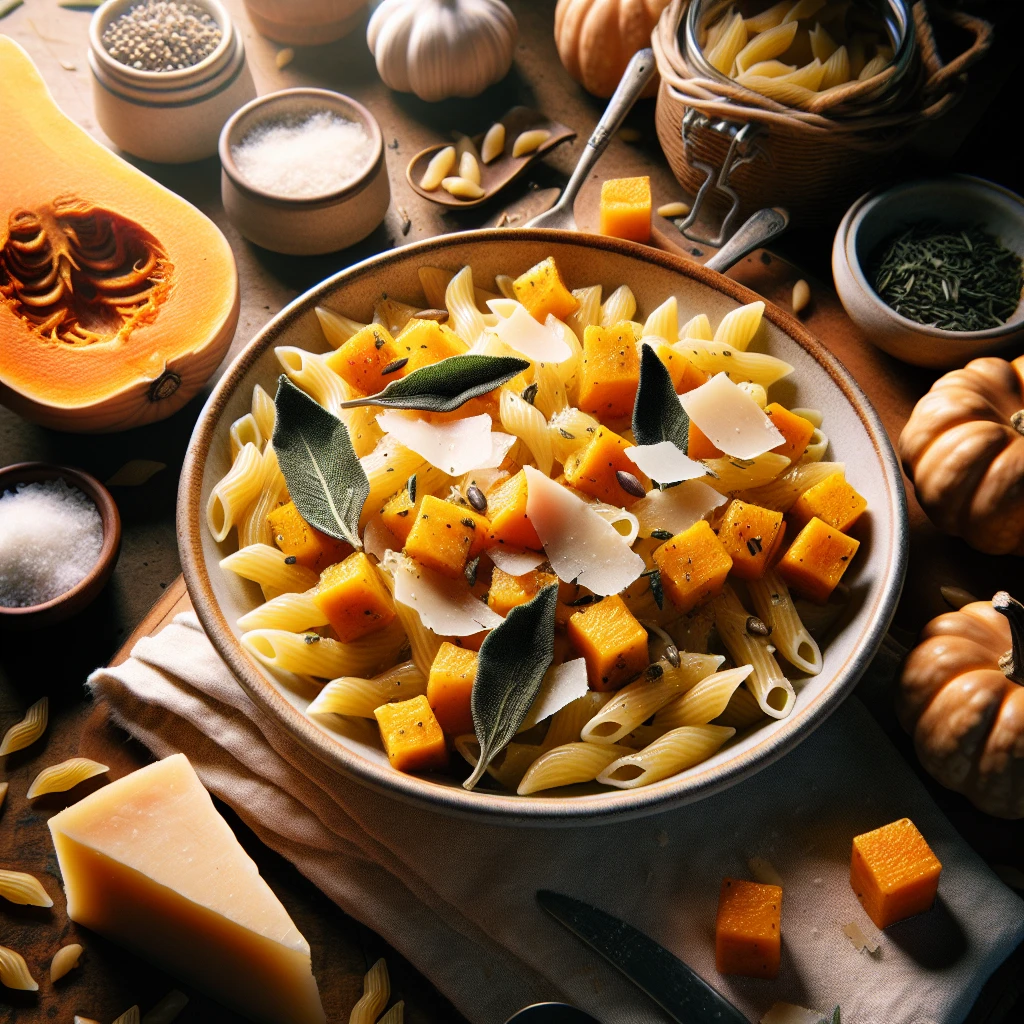
This Butternut Squash and Sage Pasta is a comforting fall-inspired dish that combines the sweet, earthy flavors of roasted squash with the aromatic crunch of sage leaves. Perfect for cozy evenings and impressing dinner guests alike.
Butternut squash provides a creamy texture and sweet flavor that pairs beautifully with pasta. Olive oil helps roast the squash to caramelized perfection, while salt and pepper enhance its natural flavors. Fettuccine serves as a robust base to soak up the sauce. Butter adds richness, and fresh sage leaves offer an aromatic, crispy finish. Garlic brings depth to the dish, and parmesan cheese adds a savory, umami punch. For a nutty crunch, toasted pine nuts are sprinkled on top, and red pepper flakes can be added for a touch of heat.
This pasta dish pairs wonderfully with a simple arugula salad dressed with lemon and olive oil. For a cozy meal, serve alongside a warm bowl of tomato bisque or a slice of crusty bread. A glass of Chardonnay or a light Pinot Noir would complement the flavors beautifully.
First, preheat your oven to 400°F (200°C). This ensures a hot environment for roasting, which is key to caramelizing the squash. Dice the butternut squash into bite-sized pieces. Toss them with a couple of tablespoons of olive oil, a good pinch of salt, and some pepper. Spread the squash evenly on a baking sheet and roast for 25 to 30 minutes. You'll know it's ready when it's tender and slightly caramelized.
While your squash is roasting, cook the fettuccine according to package instructions. Don't forget to reserve about a cup of pasta water before draining. This starchy water will help create a silky sauce later on.
In a large skillet, melt the butter over medium heat. Add the sage leaves and let them fry until they're crispy, which should take just a minute or two. Remove them with a slotted spoon and set them aside — these will be your crunchy garnish.
In the same skillet, add the minced garlic. Sauté it briefly until fragrant, being careful not to burn it. Then, add the roasted squash and the drained pasta to the skillet, tossing everything to combine.
Now, gradually add the reserved pasta water and parmesan cheese to the skillet, stirring continuously until the sauce becomes creamy and coats the pasta evenly. Taste and adjust the seasoning with more salt and pepper if needed, and sprinkle in the red pepper flakes if you’re using them.
To serve, top the pasta with the crispy sage leaves and toasted pine nuts for a delightful texture contrast.